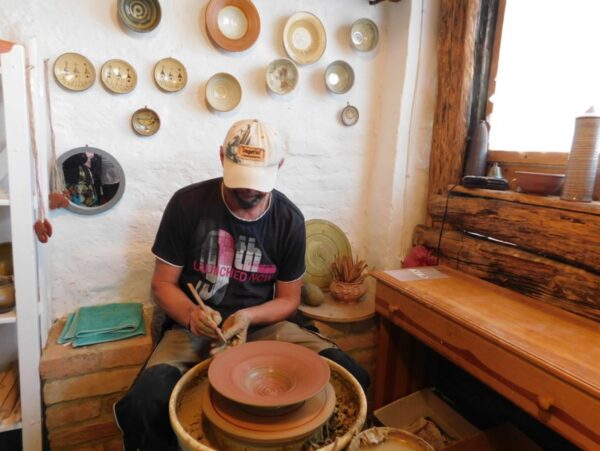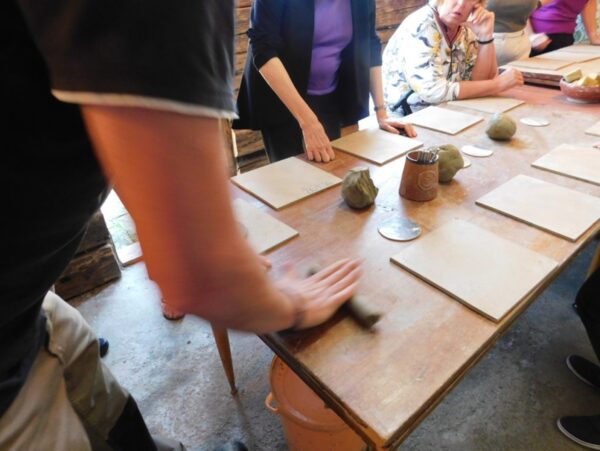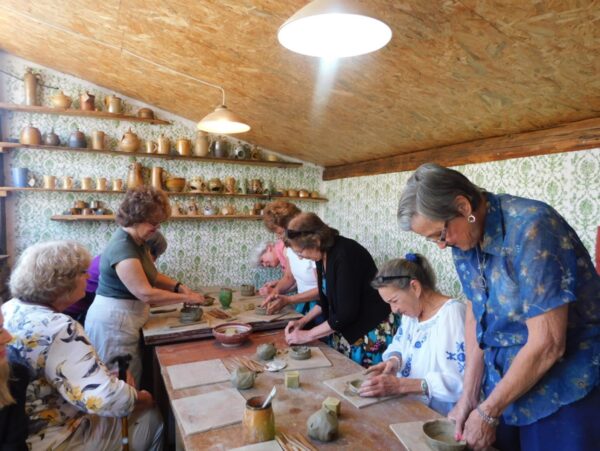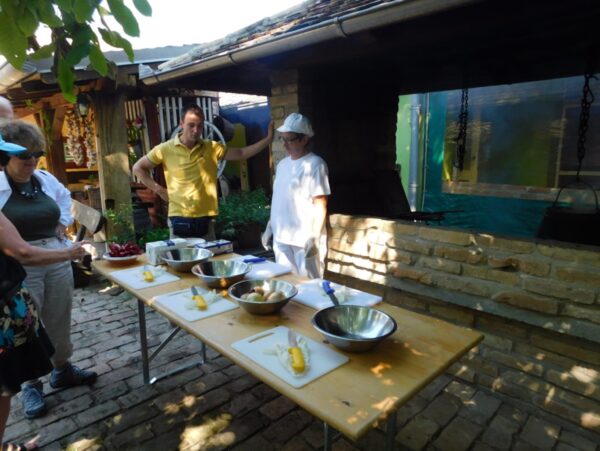One of the worst fates that can befall a pun is needing an explanation and yet, I sense that’s essential for the title of today’s entry. You see, unlike the title of the previous entry where clarification came in the context of the text, this one has nothing to do with our time and activities in the small Croatian village but is strictly phonetic. Thus, unless you have a natural gift for the sounds that comprise a language or somehow recall my brief cursory description of Croatian phonetics, the pun is meaningless. And not evoking a reaction might be the only worse fate for a pun be it either good or bad.
Here, then, is the explanation: In Croatian, the written vowel ‘a’ rhymes with ‘aah’ and a ‘c’ without any diacritic is pronounced like ‘ts’. This means the town where we’d spend the night is pronounced something like “KAH-rah-NAhts”. Thus, I was tied up in…(insert reader’s groan here.)
With that bit of business done, I’ll get on with our “Day in the Life.” We got an early start to the day with Goje’s rather sumptuous breakfast highlighted by her homemade preserves, our homemade cheese and, as I recall, a sort of fried bread that was quite good and that Damir delighted in finishing what we couldn’t.
We had a few minutes to freshen up before congregating in the courtyard of the Sklepić homestead for the first of our morning’s activities. There we met Daniel who led us into his workshop.
A potter’s spinning wheel.
If you recall my description of Slavonia’s geography, I wrote of the three major rivers – the Sava, the Danube, and the Drava – that frame the region. Because the area in and around Baranja is quite flat, the geography lends itself to producing high quality clay and, as a result, pottery making in the region dates back more than three millennia.
Although Daniel uses traditional methods, even those don’t reach back quite that far in time. While describing his work he shaped two bowls with the apparent ease of anyone who is so practiced at a craft that they make it seem natural and facile. In a matter of minutes, while he explained what he was doing, he turned this:.

into this:.

Of course, anyone who has ever tried to work clay knows this isn’t nearly as easy as he made it appear.
Still, while we wouldn’t be working with the potter’s wheel, everyone was invited to explore their creativity using a different method – “simply” molding a design from wet clay by hand.

Fortunately for everyone’s esthetic, participation wasn’t mandatory and, guided by the Harry Callahan principle that “a man’s got to know his limitations,” I chose an observer’s stance. A number of the women in our group were more adventurous than I and they all approached the task earnestly.

Daniel judged the final products and awarded prizes for first, second and third place. (I don’t recall who won.) Before we left, he gave us each a small cup with primitive designs and the word Karanac fired on.
How many knots would Karanac knot if Karanac could knot knots?
No. I won’t stop.
Next, we had a second visit with Lilly so we could see her jewelry and pick a few raspberries that were growing in her family’s garden. We ate some and gave some to her father who had been picking them along with us. (You can see a dish of them on the table in the photo below.) I bought a pair of earrings for my grandniece Maya whose cleverness inspired the blog’s site name. I wasn’t alone in purchasing some of Lily’s work.

And yes, that’s some homemade cheesecake that survived last night’s dinner. Though we hadn’t come to eat again, I guess Lilly’s mother assumed we would think her a poor host if she didn’t offer us a plate of food. And, of course, I would think myself a rude guest if I didn’t indulge in at least one slice. Looking at the picture in retrospect, I can’t help but wonder why I didn’t have it with a few of the berries.
We’ve just gotten started.
Believe it or not, the day was still quite young – perhaps 10:00 or 10:30 and Damir had forewarned the group of at least one more participatory event ahead of us that involved assisting in preparing our lunch. We didn’t know precisely what we’d be asked to do and he was being cagily mysterious.
But first, on our way to the restaurant, we stopped near the Dobriša Cesarić Elementary School. Damir took us there because this school is OAT’s beneficiary project in Croatia. OAT is a subsidiary of Grand Circle Tours which operates the Grand Circle Foundation and, in every off the beaten path village their groups visit as part of the Day in the Life program, they seek a project that supports “the education of young people and the preservation of cultural treasures and traditions.” Some portion of the cost of your trip is automatically donated to the local project and, of course, travelers can make additional contributions of their own.
Had school been in session, we would have had the opportunity to visit the children as they were in class. However, being mid-August, we could only listen to Damir tell us what projects the foundation had completed and what projects remained.
When we arrived at the restaurant, Baranjska Kuća, a staff person met us with the traditional 10:30 cups of rakija. We proceeded to an outdoor area where strips of beef, onions and other ingredients together with latex gloves and sharp knives awaited for us to prep under the guidance of one of the cooks.

Since I knew I wouldn’t participate in the consumption, I demurred participating in the preparation.
Once the ingredients had been sliced, diced, minced and otherwise made suitable, the whole lot would be placed in a large pot to simmer for several hours. (The cook told us that biting on some onion skin and keeping it between the cutting board and your eyes would prevent tears. By my observation, the trick worked for some but not for others.)
So, with hours to wait until lunch would be ready, what would we do? The next post has that answer.
Chorwacja jest piękna
Dobrze napisane